Here’s a list of tactics we’ve used at Ahrefs to grow +65% year-on-year. They’re mostly free. You can use them to promote your business too.
- Get listed on popular directories
- Blog regularly
- Create YouTube videos
- Repurpose your content on multiple channels
- Build an email list
- Run a giveaway
- Get featured on podcasts
- Write guest posts
- Partner with other relevant businesses
- Get your product reviewed
- Create a comparison page
- Speak at events
- “Jab” on social media
Google isn’t the only way people find businesses online. Many people prefer to search trusted industry directories.
For example, you might use TripAdvisor to find a local restaurant, Avvo to find a lawyer, or HomeAdvisor to find a plumber. Many people use these sites directly, but they also rank high in Google for local searches.
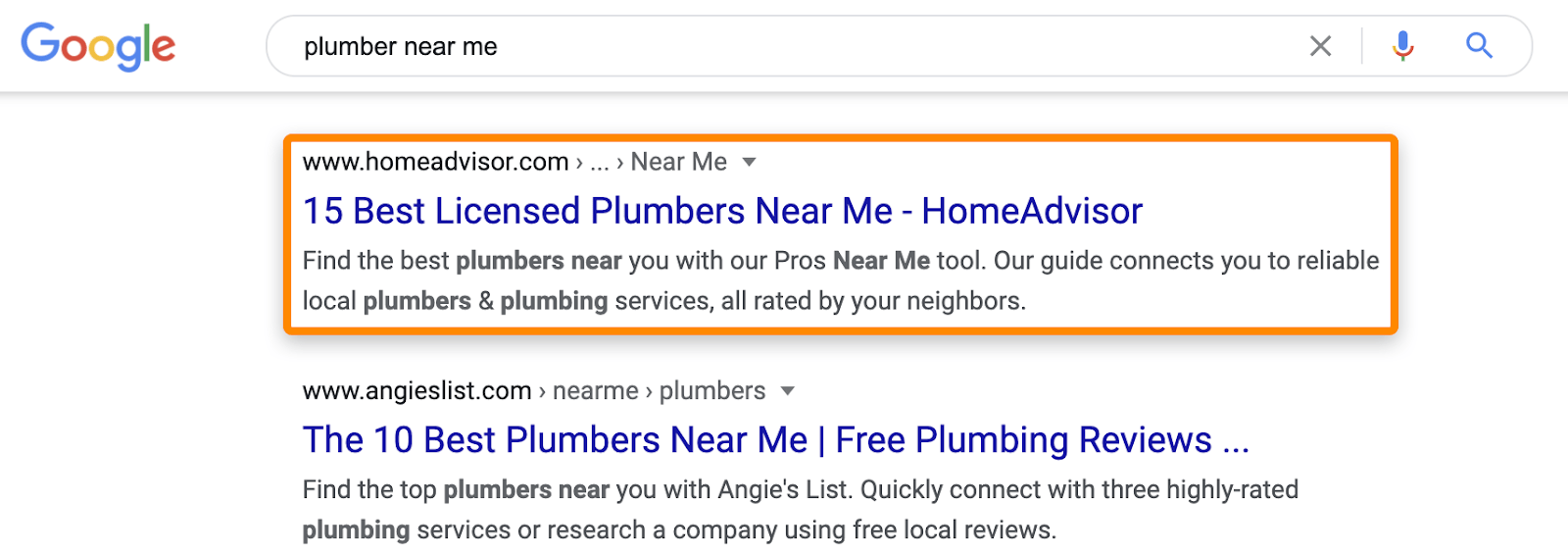
Being on these sites is important for people to discover your business, and most offer profiles for free.
But how do you find them?
One method is to search Google for “[type of business] near me.” Look for directories in the search results.
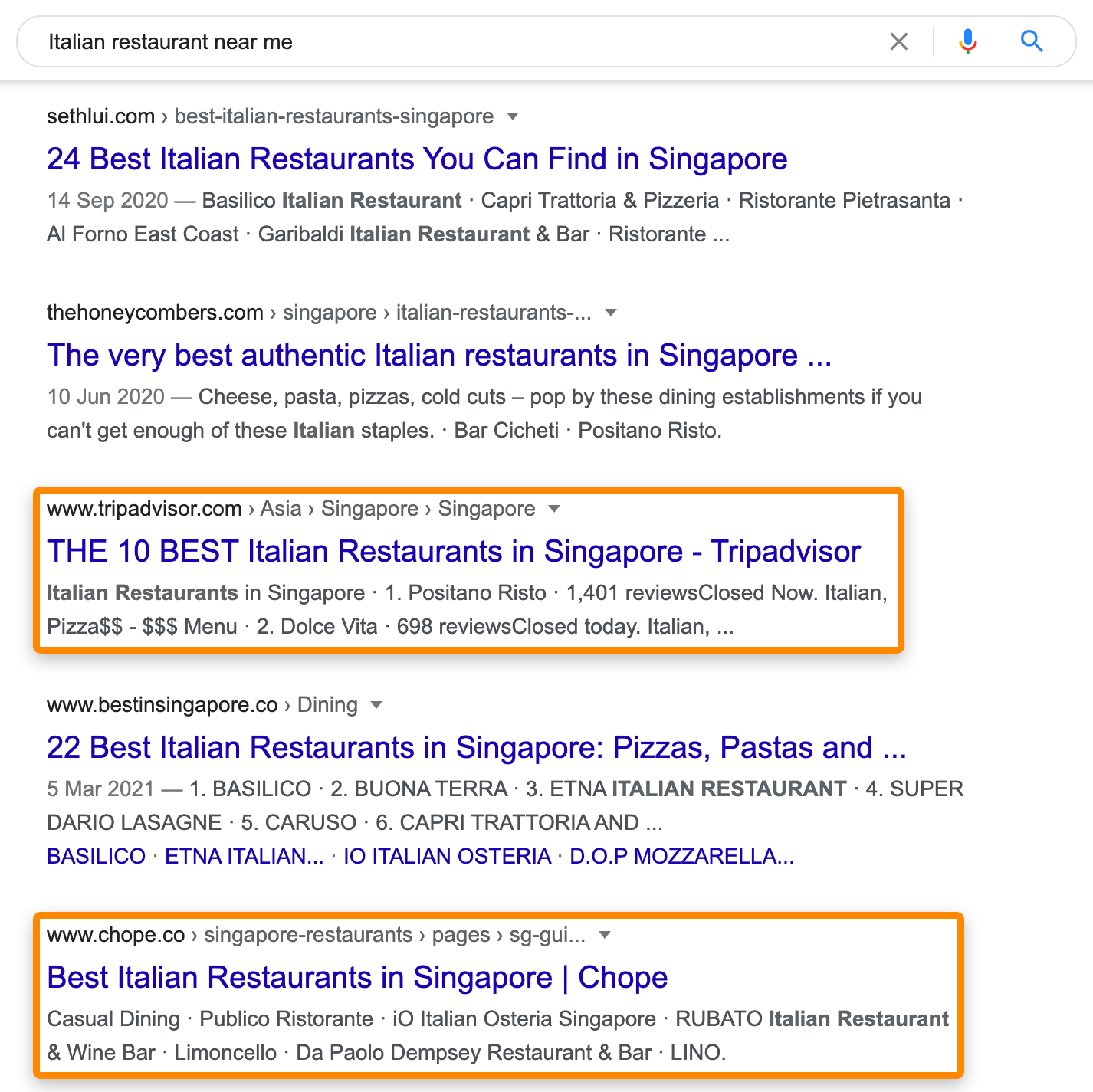
Another method is to use Ahrefs’ Link Intersect. Link Intersect shows you who’s linking to multiple competitors, but not you. This can help surface directories where your competitors are already listed, and you’re not.
To do this, enter a few of your competitors’ homepages into Link Intersect.
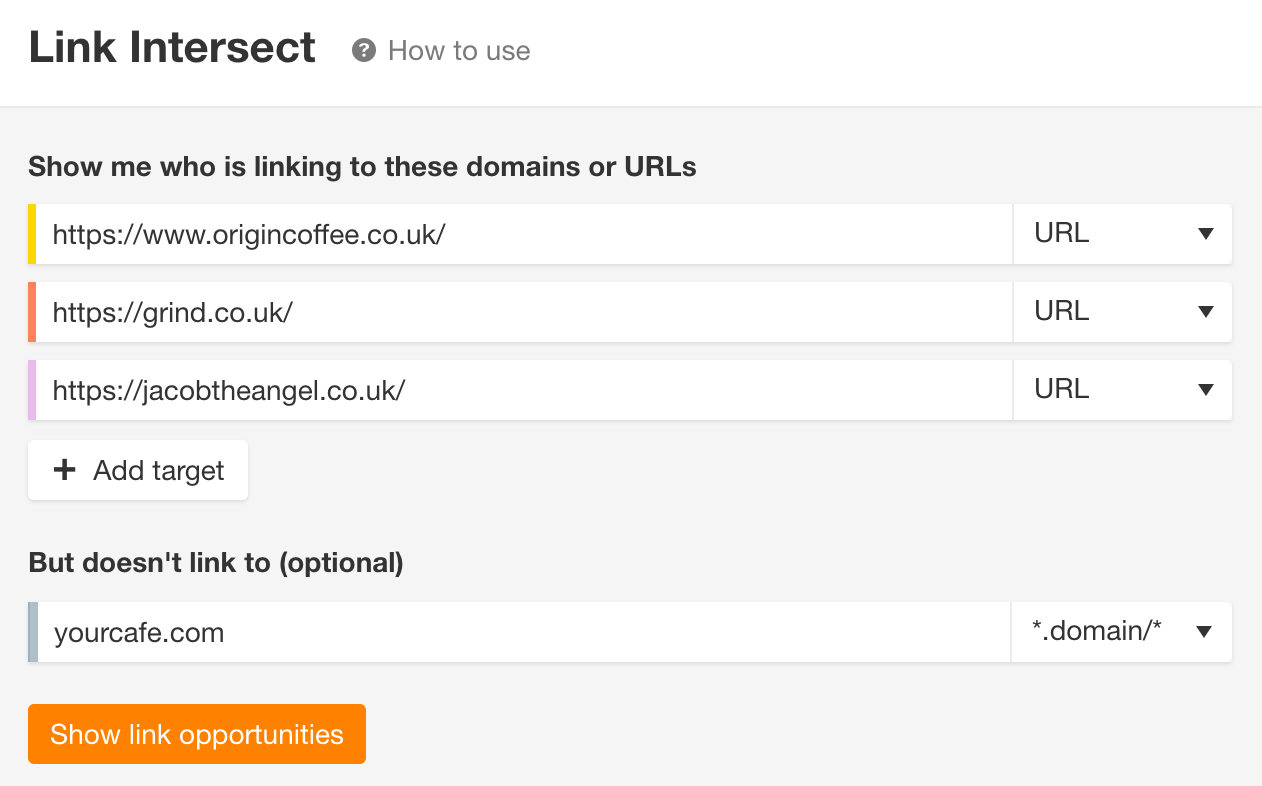
Then, hit “Show link opportunities.”
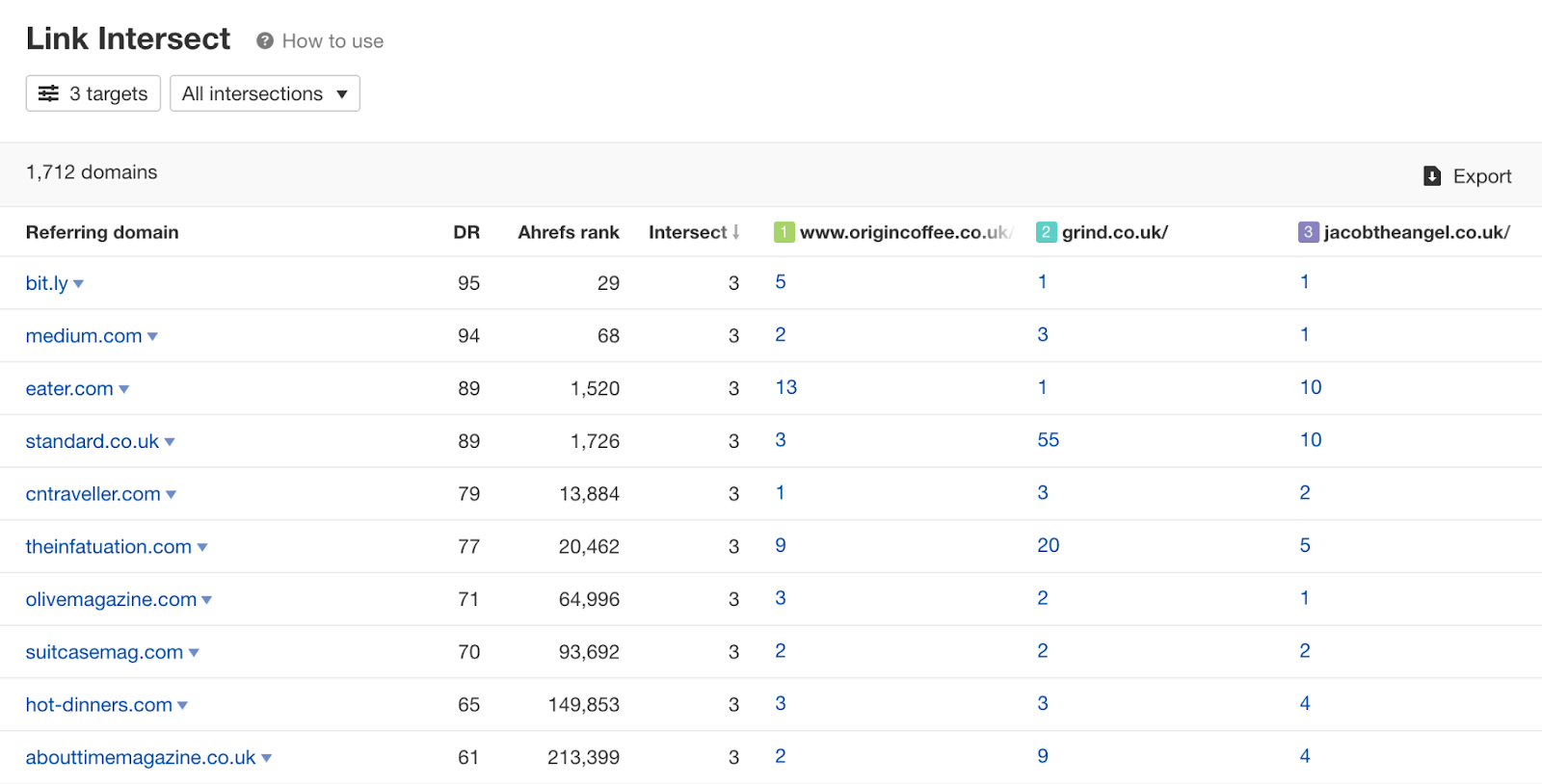
Look through the list and see if there are any directories. For example, this site looks like it’s a directory and it’s also linking to all three competitors’ sites.

If you’re a cafe in the UK, and you’re not listed here, you should correct that.
The Ahrefs blog gets ~397,000 search visits a month.

Bear in mind that this is traffic only from Google. Include other channels and we get way more.
At any given time, there are only so many people who are ready and willing to purchase. Target only them and you miss out on a big chunk of your market. But, with blogging, you can reach the rest who aren’t ready to buy today.
For example, we rank #1 for “blogger outreach.”

People searching for this know they have a problem: they want to reach out to influential bloggers, but don’t know how. However, they’re not aware of our business or how our toolset can help. After all, if they did, they would have searched for our brand directly.
By ranking for terms like this with blog posts, we’re able to promote our business by explaining how searchers can use Ahrefs to solve the problem they’re facing. And that’s exactly what we do in this post.
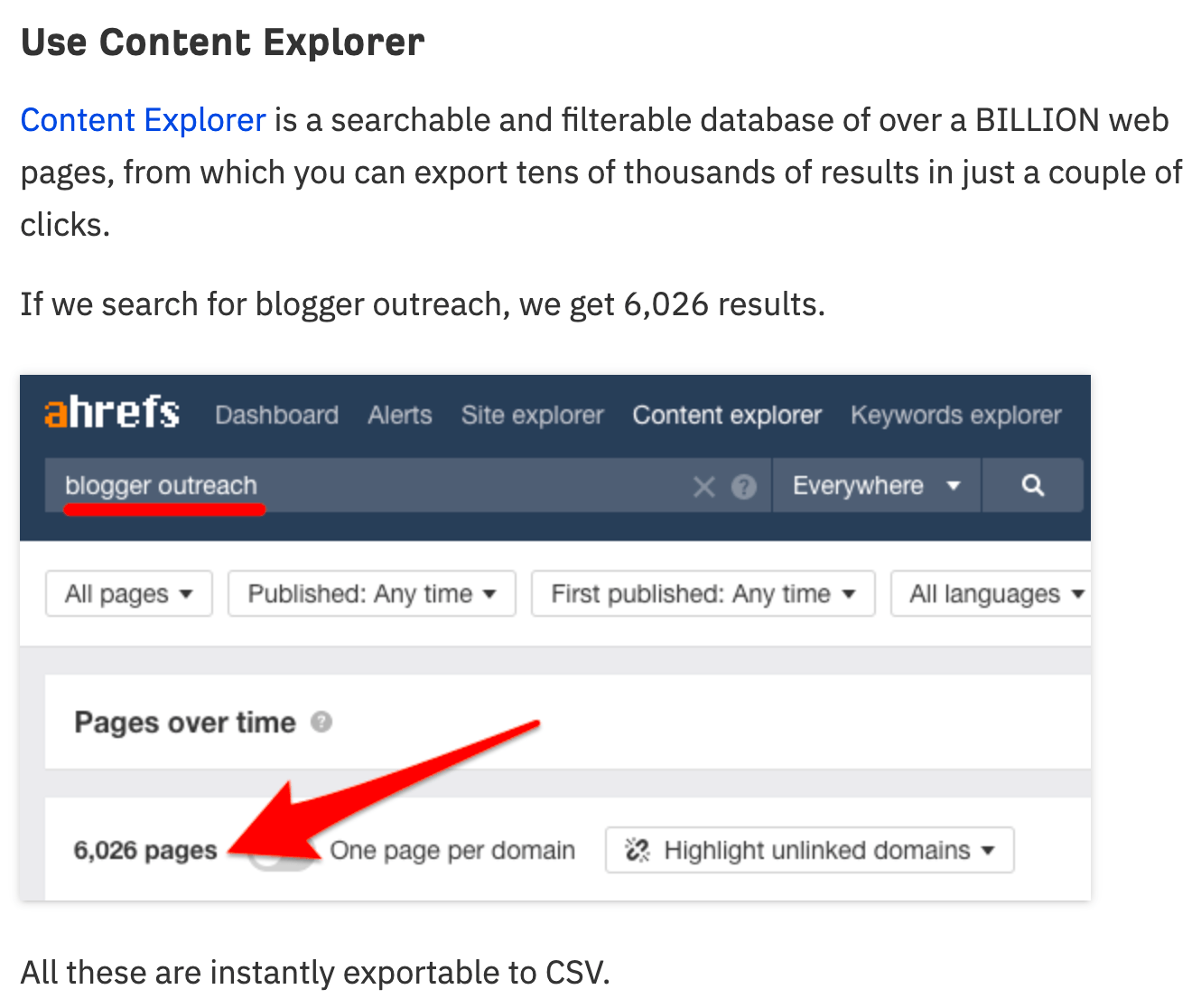
To create a successful business blog, there are two ingredients. You need to target topics that have:
- Search traffic potential. People are looking for these topics in Google.
- Business potential. The topic allows you to pitch your product or service.

To find topics with search traffic potential, the easiest way to start is to use a free keyword research tool like Keyword Generator. Enter a relevant keyword and it’ll show you up to 150 topics.

Look through the list and rank them based on business potential. Here’s the chart we use at Ahrefs:
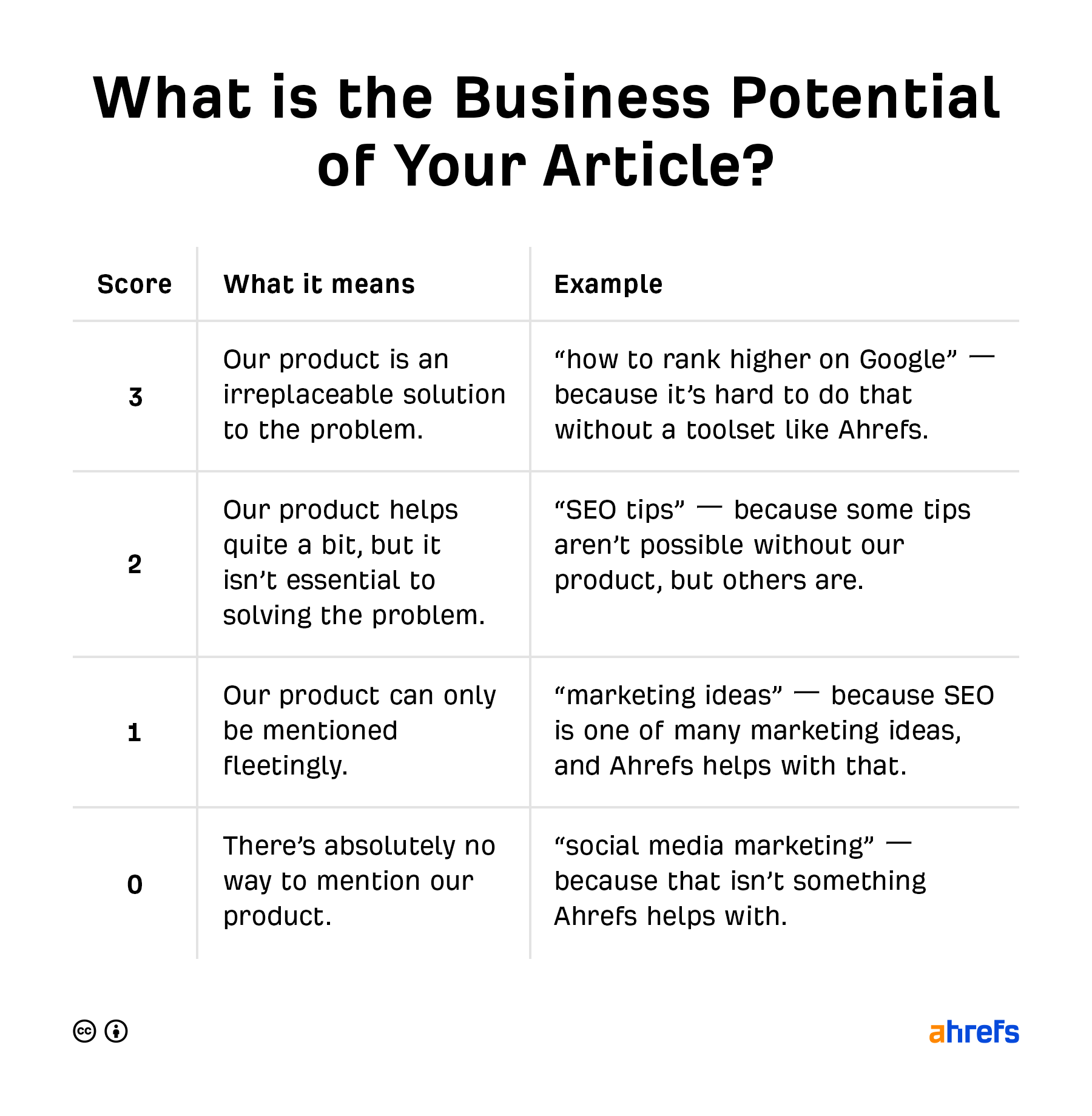
Recommended reading: What is SEO Content? How to Write Content that Ranks
Written content isn’t the only type of content you can produce. There’s video content too. YouTube is the second most popular search engine in the world (excluding Google Images.)
Since 2018, we’ve put in a lot of resources creating YouTube content. And it has paid off tremendously. Today, we have ~217,000 subscribers and get ~500,000 views per month.
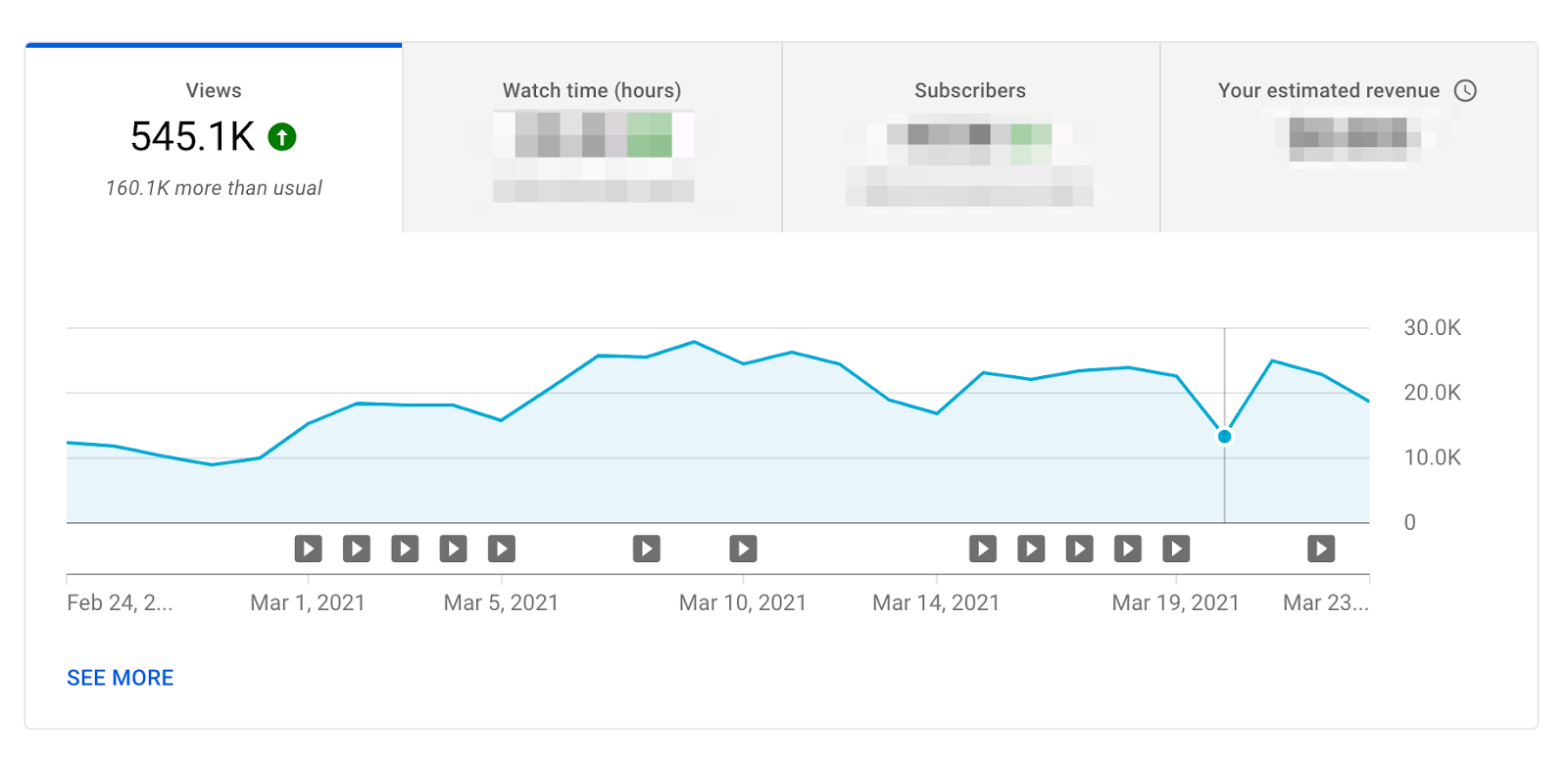
It has also brought us tons of customers.

For video marketing, follow the same content marketing strategy you used for blogging—target video topics that have both search traffic and business potential.
You can find YouTube topics by using a keyword research tool like YouTube Keyword Tool. Similarly, enter a relevant keyword and you’ll see 150 different topics you could potentially target.
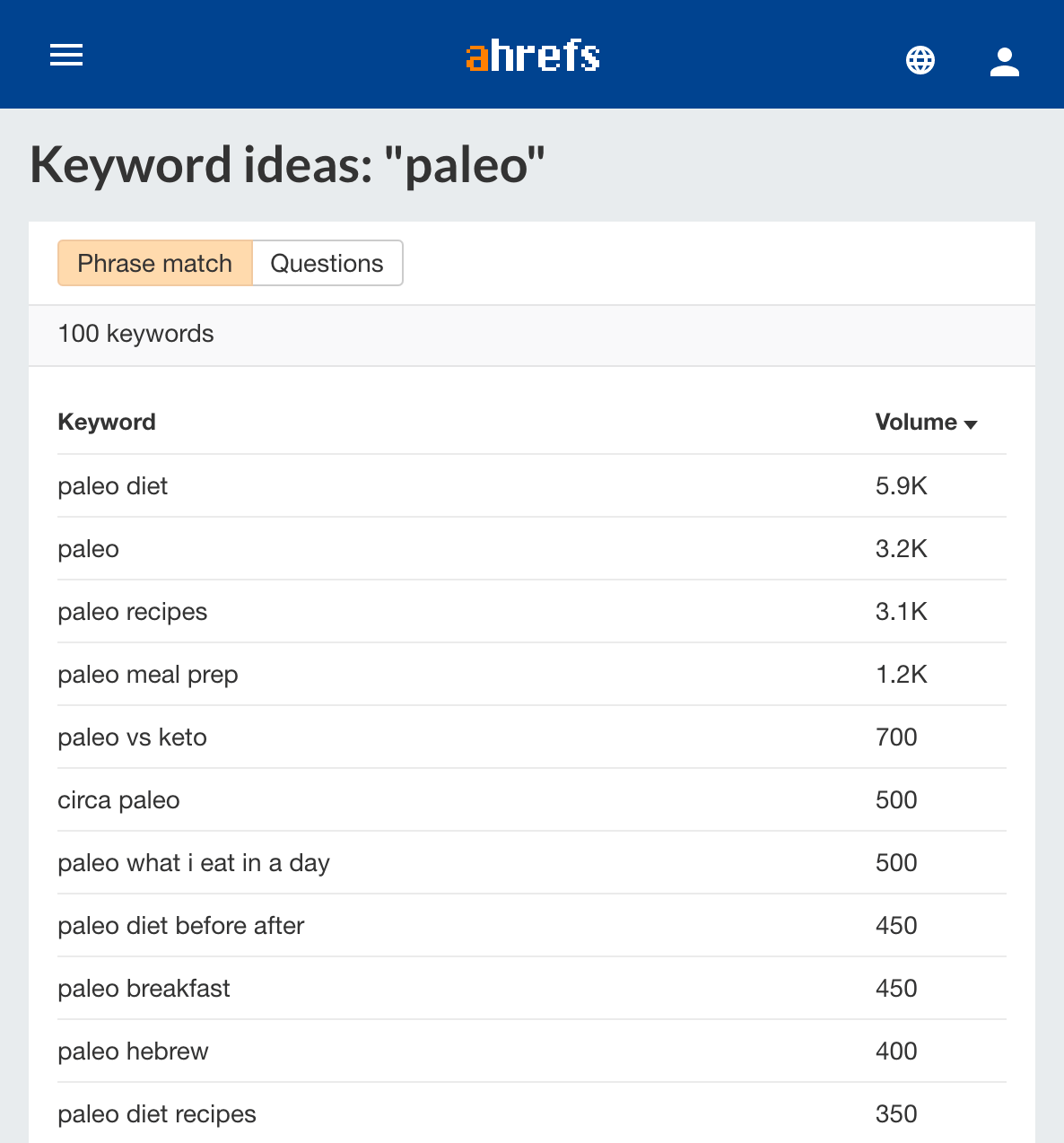
Look through the list, note down any relevant topics and rank them by business potential.
You don’t always have to create content from scratch. Turn content you’ve created in one format (e.g. YouTube video) and change it into another (blog post.)
For example, our video about affiliate marketing received over 74,000 views:
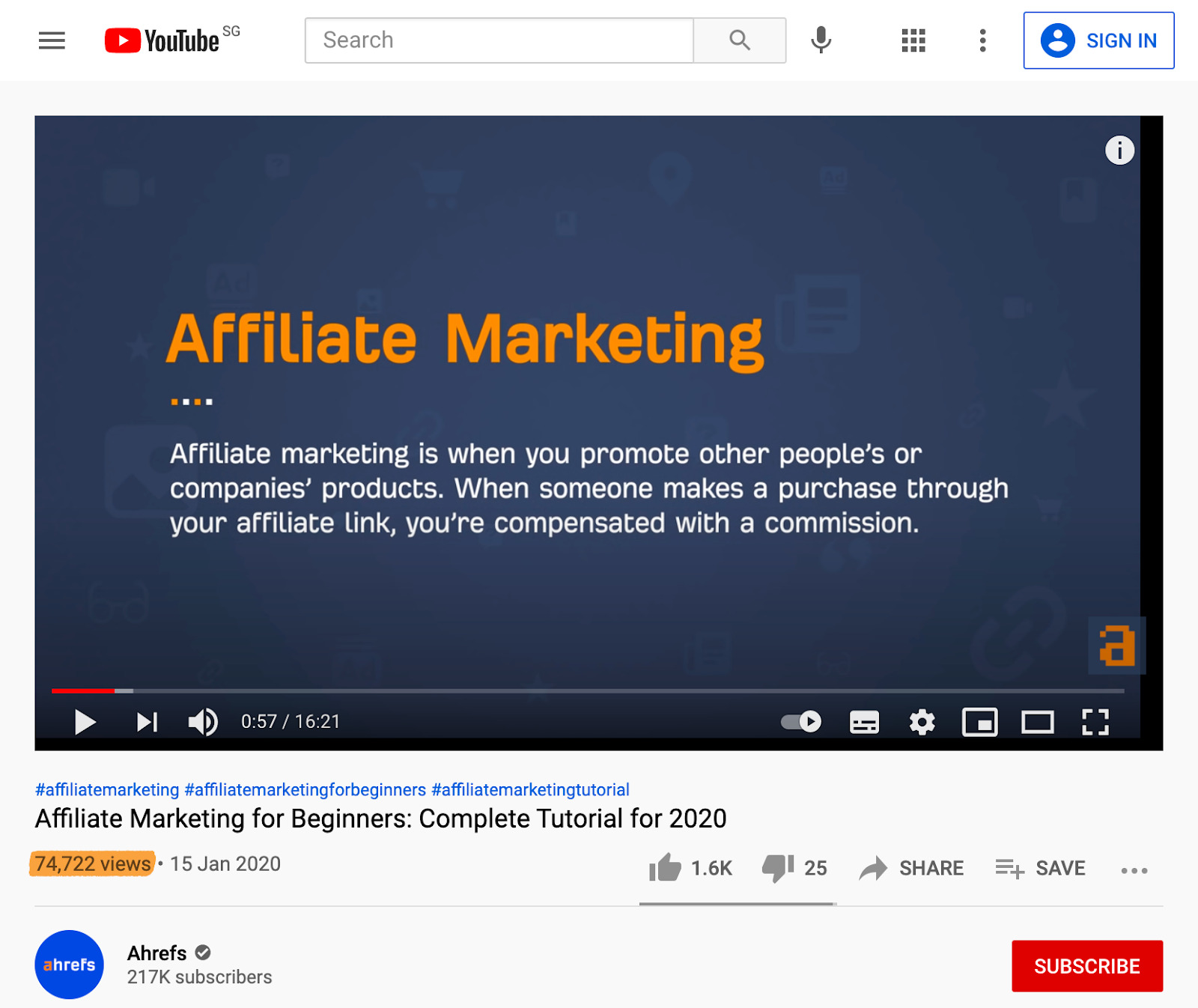
We repurposed it into an article, which gets ~34,000 search visits per month:

We even managed to occupy two positions in the SERPs, generating more passive organic traffic over time:
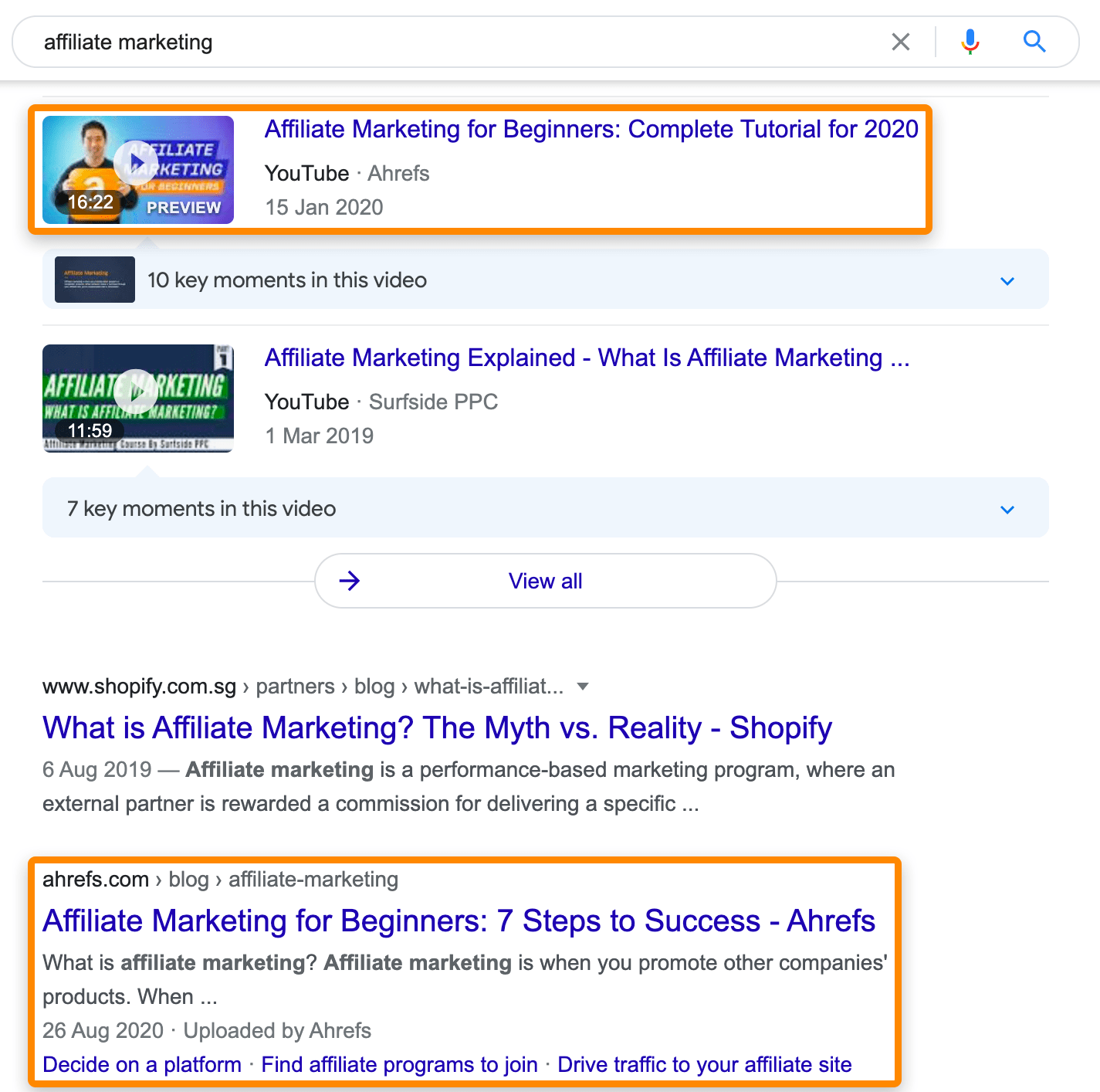
One piece of content is no longer just one piece of content. It’s more than that. And it’s not just video to text either. You can:
- Turn a blog post into a popular tweet;
- Turn a YouTube video into multiple bite-sized versions;
- Turn infographics into popular LinkedIn posts;
- And more.
Think of it like a pyramid. Start with one version, then gradually break it down into smaller versions for other channels.

Recommended reading: The Complete Guide to Content Repurposing
Every week, we send a newsletter to ~120,000 people with all the content we’ve published that week.
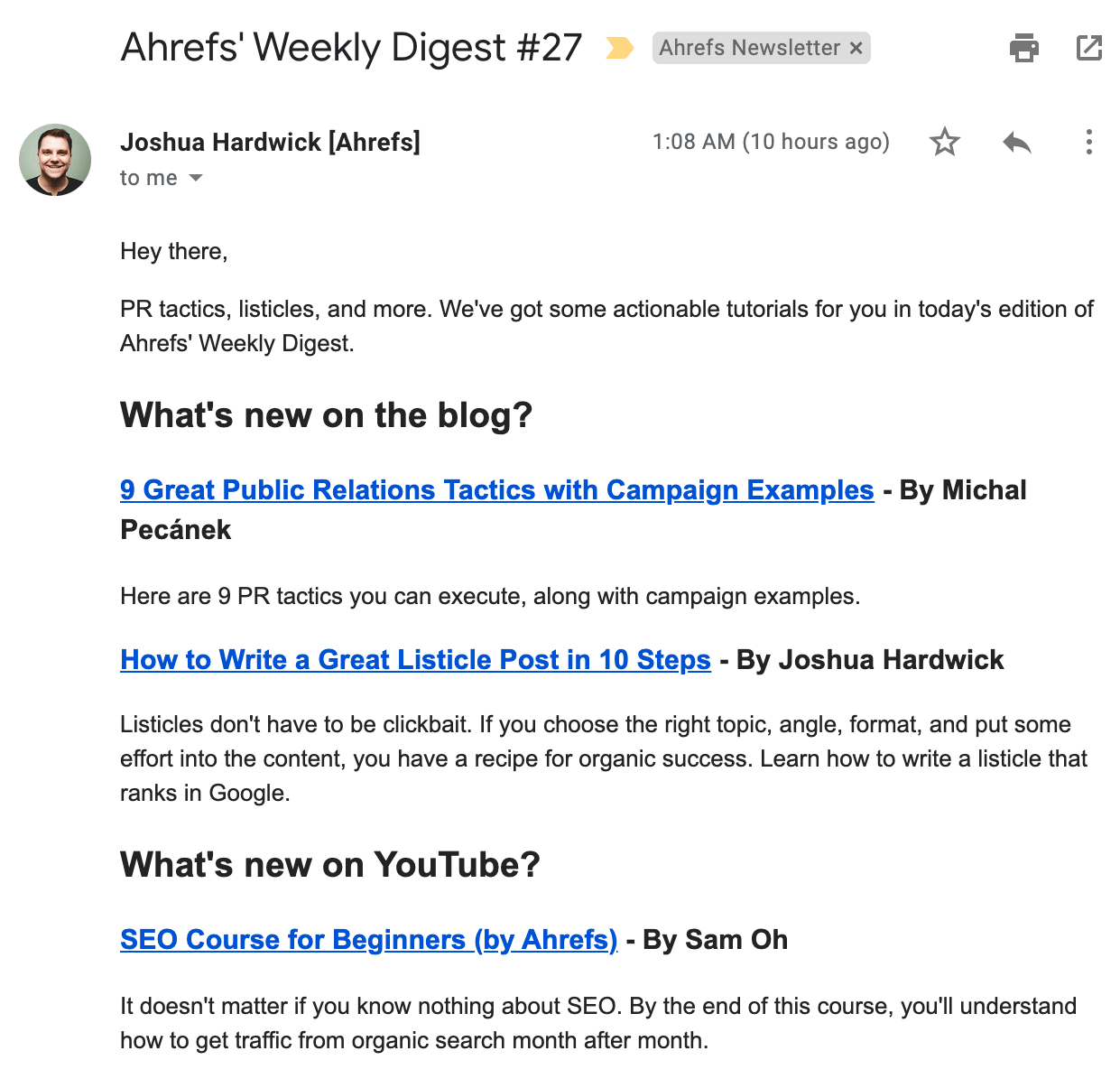
These are not 120,000 random people. They are people who have explicitly told us they want our content.
Our secret? We built an email list.
Building an email list means you own the communication channel. Anytime you want, you can communicate with your fans. You can send offers, content, etc.—anything you want.
So, how do you build an email list?
The easiest way is to offer something in return for subscribing. At Ahrefs, we keep it simple by offering to deliver more of the content they enjoyed directly to their inbox.
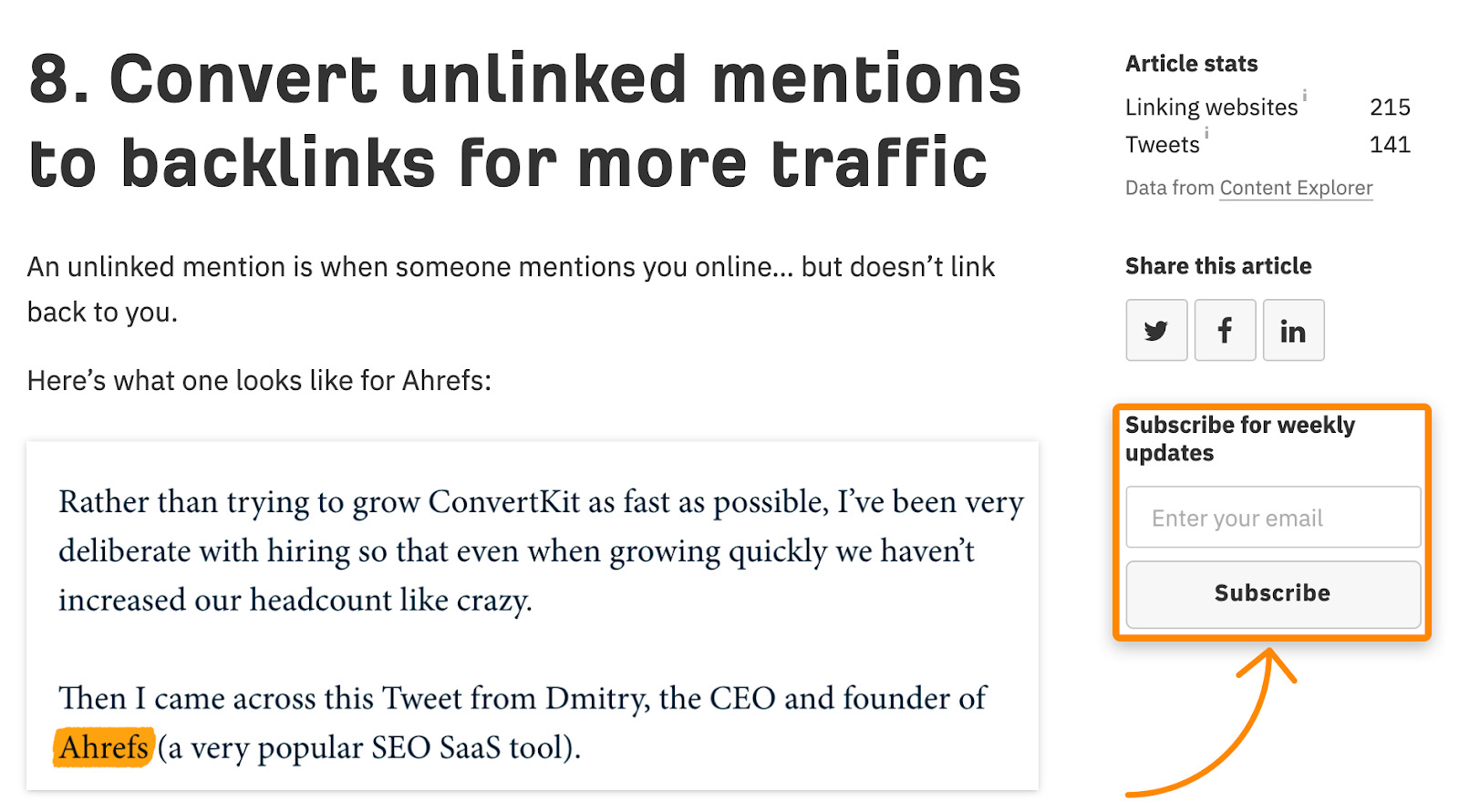
You can be a little more “aggressive” by offering a “carrot”—perhaps a PDF of the post or a free email course.
When done well, giveaways work. It promotes your business, improves brand awareness and even builds your email list.
The key phrase here: “when done well.”
I say this because plenty of businesses run giveaways without a strategy. All they do is simply give away the biggest prize they can imagine—a MacBook Pro, an iPhone, even a Tesla car. Yes, this gets a lot of attention. But you also end up attracting all the tire kickers, freebie seekers and everyone under the sun.
That’s not the point of the giveaway. The goal is not to operate the largest giveaway in the world; it is to eventually attract people who are relevant to your business.
That means you need to give away something that your target audience wants. The most direct way is to give away the product you’re selling. For example, at Ahrefs, we used to run giveaways whenever we sponsored a podcast.

However, if you’re a new company or have a new product that no one knows of, then it may not be an attractive prize. In that case, you can partner with a business that targets a similar audience but does not compete with you.
For example, a few years ago, I worked at a startup where we were selling a completely new product: a massage jacket. We only had a working prototype, so giving away our product was not an option. Since our target audience were people with back pains, we partnered with a similar company and gave away their product as a prize.

In exchange, we did everything else—setting up the giveaway, promoting it and sharing the email list with the sponsoring company.
Once you’ve decided on a suitable prize, you can use a free app like KingSumo to set up the giveaway.
There are thousands of podcasts right now. There’s probably one in your industry too. And they’re looking for guests.
So, be that guest.
You can find podcasts by searching for “[your niche] podcasts” on Google. But you may find that most of the suggestions are established podcasts—probably hard to get on if you’re new on the circuit.
An alternative way would be to look for someone in your industry who has been a guest on many podcasts. For example, if you sell a language app, then Steve Kaufmann is such a person.
Enter his website into Ahrefs’ Site Explorer, go to the Backlinks report, and search for his name in the “Include” box. Set it to search for “only titles of referring pages.”

You’ll see a list of places where he has been featured on podcasts.

Look through the list and see if there are any podcast opportunities. Then, reach out to the host and pitch yourself as a guest.
Recommended reading: 12 lessons I learned from doing 20+ podcast interviews in 4 months
Guest blogging is when you create a piece of content for another blog.
Why would you want to do that? Simple. When you write for another site, you get exposure to their audience. You also get to link back to your content. People who are interested may click through, sending you referral traffic. And since links are an important ranking factor, they can help boost your own pages on Google.
To begin, find sites that are currently accepting guest posts. You can do that by using a few advanced search operators in Google:
- [your_topic] “write for us”
- [your_topic] “guest post”
- [your_topic] “guest article”
- [your_topic] “become an author”
- [your_topic] inurl:contribute
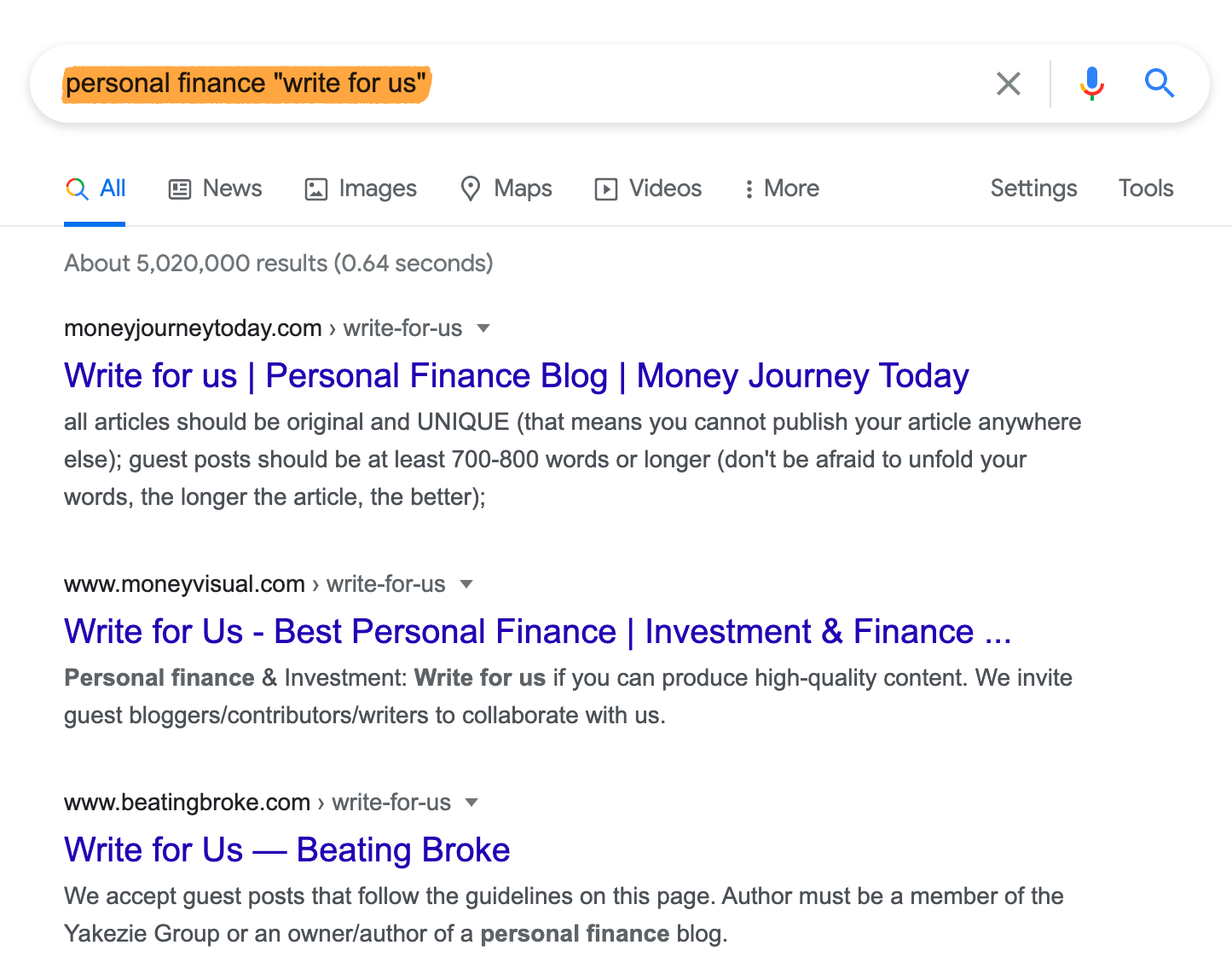
While this is a good way to start, you shouldn’t limit yourself to just this tactic. There are many blogs who accept guest contributors but do not actively seek them. Yet, if they’ve published posts on certain topics before, then there’s a high chance that they might be interested in a guest post about a similar topic.
You can find these sites using Content Explorer. Content Explorer is a mini search engine within Ahrefs. It’s powered by our database of five billion pages and you can use it to find mentions of anything on the web.
Start by entering a relevant word or phrase into Content Explorer. Set it to just an “in title” search.

Then check the “one article per domain” box to avoid contacting the same sites twice.
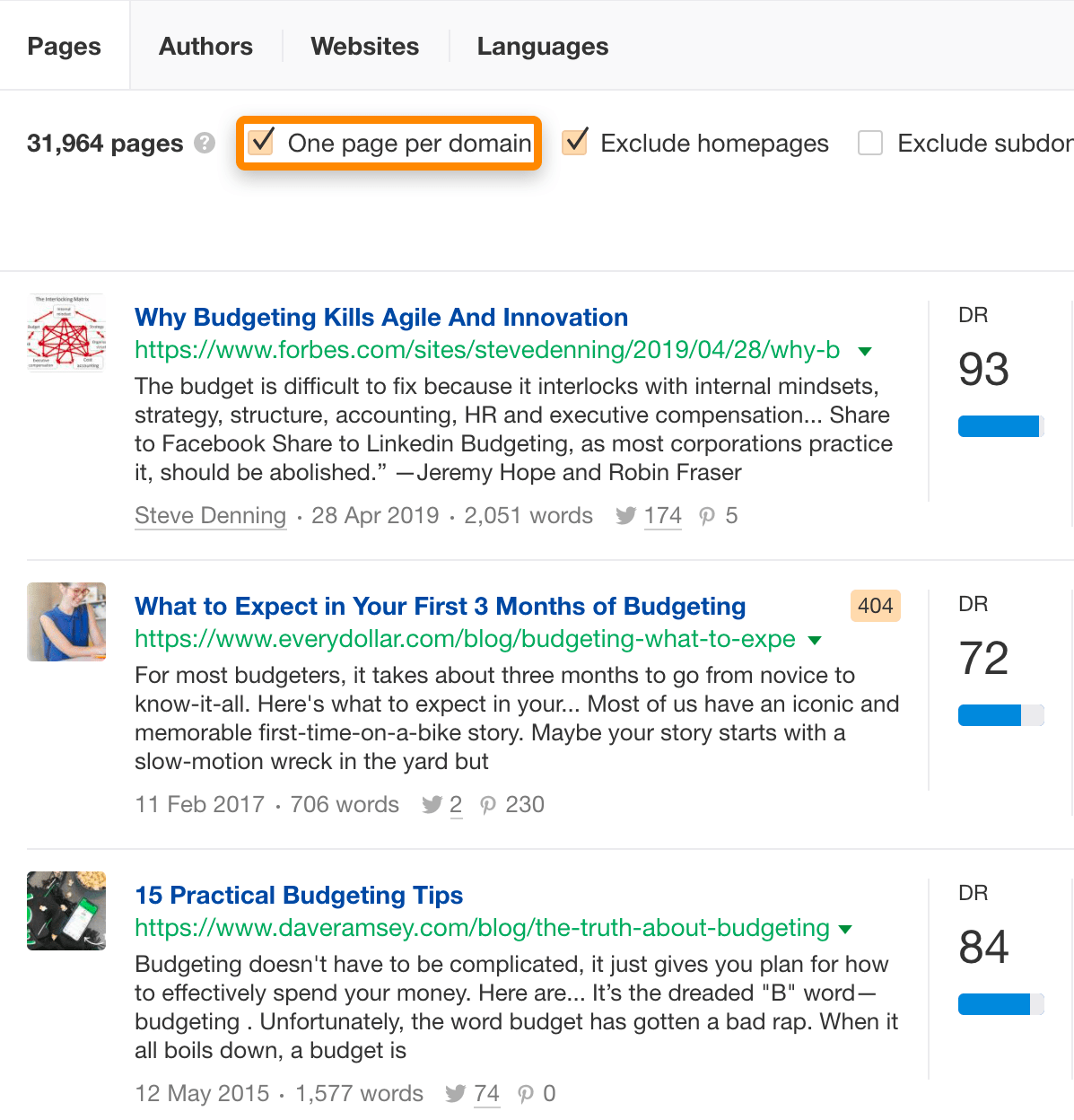
You can also narrow down the list by focusing on blogs that are “at your level.” Set the Domain Rating filter to ~21-70 to find these sites.

Recommended reading: Guest Blogging for SEO: How to Build High-quality Links at Scale
Quick question: what do guest blogging and appearing on podcasts have in common?
The answer: tapping into other businesses’ audiences.
If you’re a new or small business, you don’t have your own audience. But others do. So, if you can provide some benefit to them—like free, high-quality content for guest blogging—you can tap into their audience and drive traffic to your website.
For example, we worked with Buffer, a social media scheduling tool, on a webinar titled, “How to Get Website Traffic With Evergreen Content and Social Media Marketing.”

Neither toolset competed with each other. But both of us targeted the same audience—a perfect match for collaboration.
Here’s the takeaway: look for opportunities to work with businesses that serve the same audience, but solve a different problem.
When we launched our massage jacket on Kickstarter a few years ago, we hit 200% beyond our target funding goal. The biggest contributing factor was a ton of earned media mentions.
How did we do it? Simple: we sent our jackets to journalists and influencers. They then reviewed it and wrote an article about our product. We ended up in popular tech websites like Engadget.

More recently, at Ahrefs, we launched Ahrefs Webmaster Tools. Similarly, we gave a preview to journalists, which landed us mentions on Search Engine Journal and Tech Radar.

How do you figure out who you should send products to for review?
The easiest way is to figure out who has reviewed or featured products similar to yours, then reach out and offer them your product for testing.
To begin, brainstorm 2-3 competing businesses. Then, enter their brands into Ahrefs’ Content Explorer. For example, if you were a mattress company, then potential competitors would be Eight Sleep, Casper and Purple.

You’ll see tons of pages that mention these businesses.
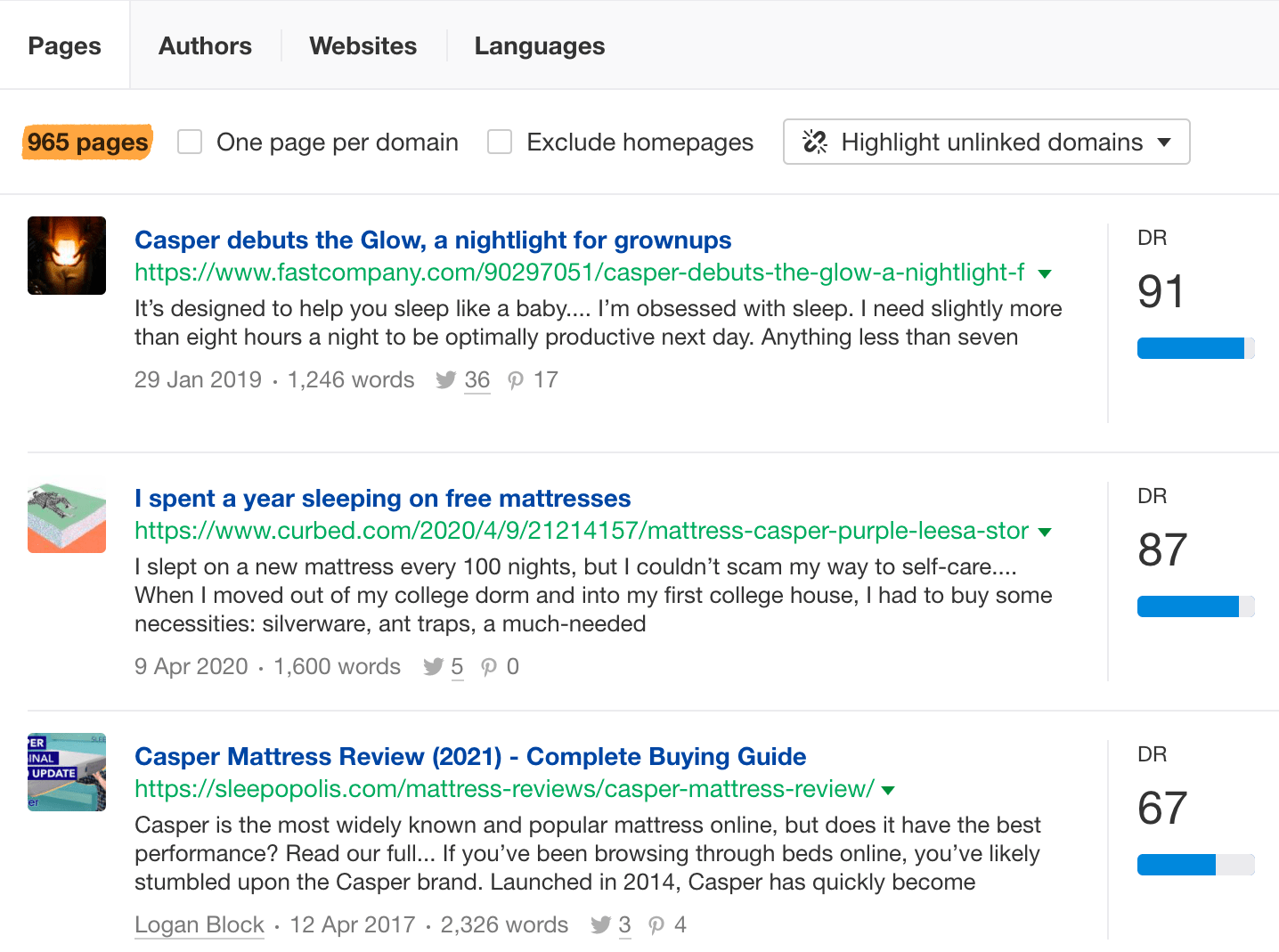
Then, hit the “Highlight unlinked domains” filter and add your domain. This will show you sites that do not currently link to you.
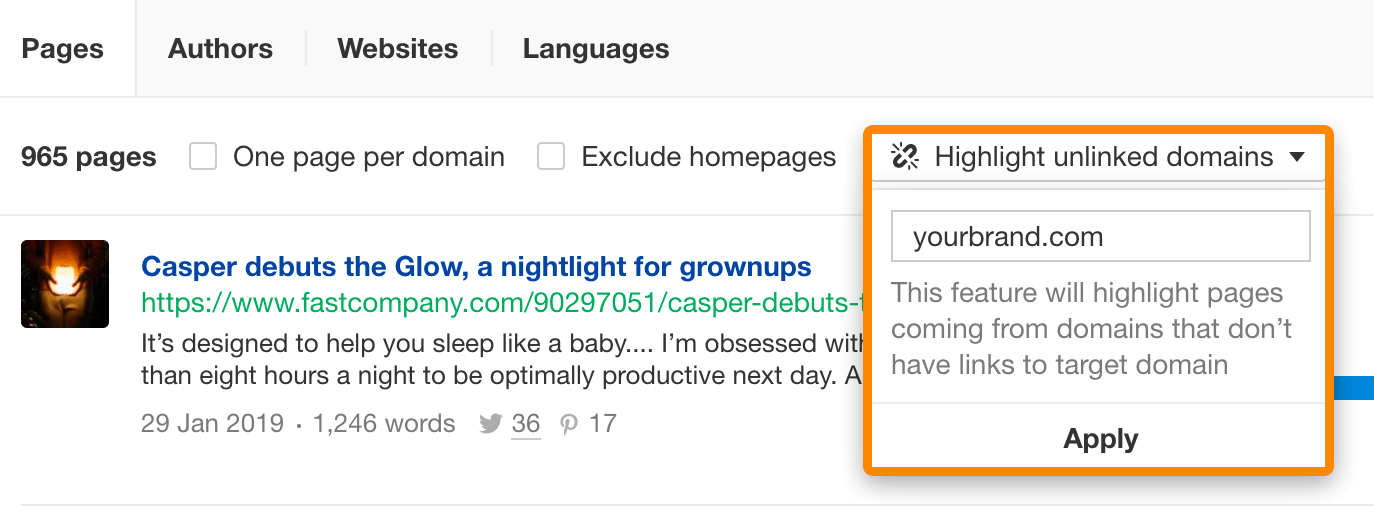
Export the list, reach out, and try to get your business mentioned alongside your competitors.
Whether you like it or not, your customers will compare. After all, they’ll always want the biggest bang for their buck. So, why should they choose you over your competitors?
To answer this question, you can create a comparison page where you compare the pros and cons between your business and a competitor.
To find out who your customers are comparing you with, enter your brand name into Ahrefs’ Keywords Explorer, then go to the “Phrase match” report.
Under the “Terms” column, look for words that signify that customers are comparing. For example, “vs” is a term that tells us that customers are comparing Mailchimp with something else. Click on it and you’ll see a list of different “vs” search queries. These are the businesses your customers are comparing you to.
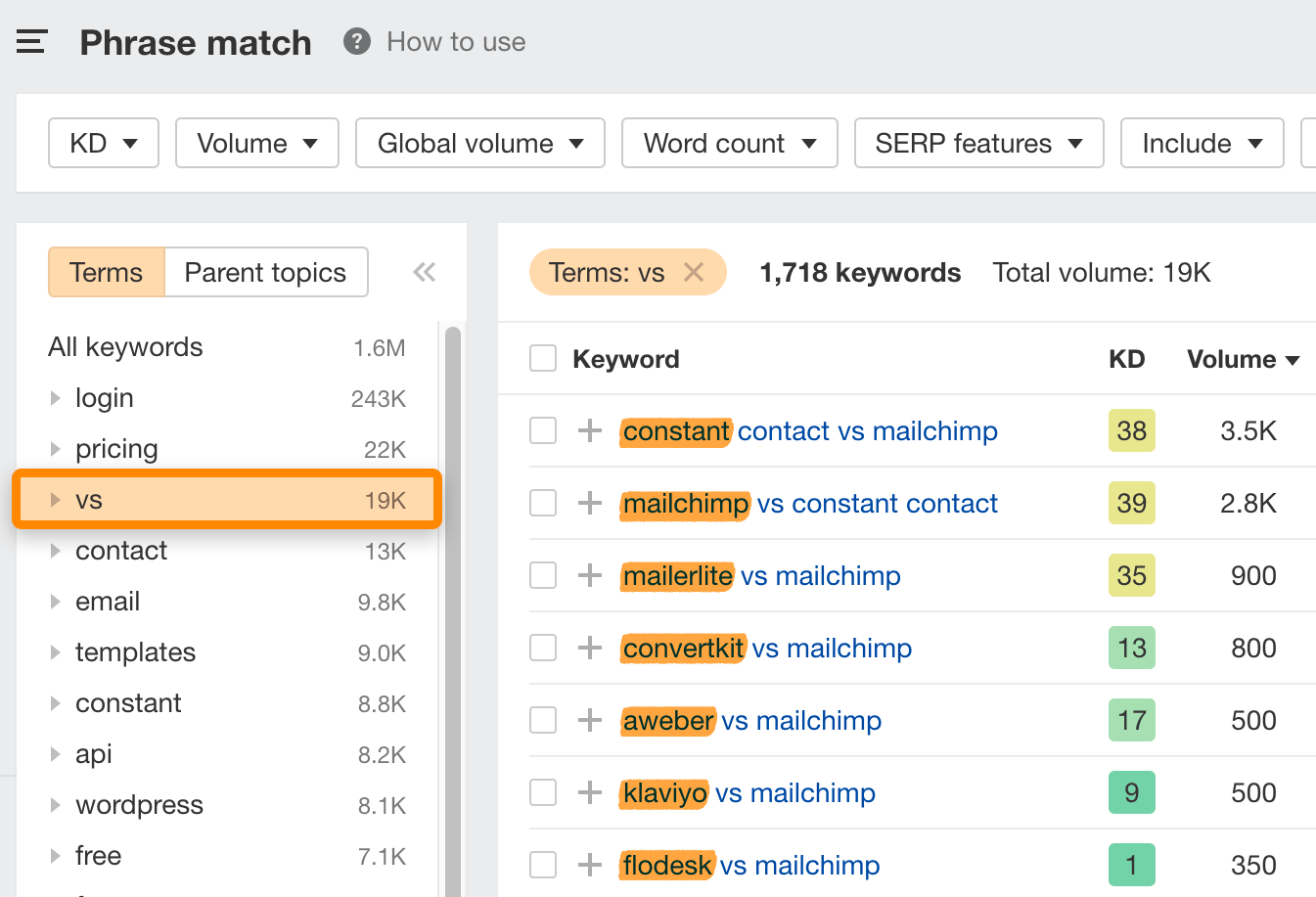
At this point, most businesses will create a comparison page where they’ll win in every category. But as famed advertising executive David Ogilvy once said, “The customer is not a moron. She’s your wife.” Your customers will see through your bluff and bias. They know that winning in every feature set is not possible. It will only erode their trust in you.
Rather, take the chance to be open about some shortcomings. Once again, as David Ogilvy quipped in his book, Ogilvy on Advertising:
“Tell your prospective client what your weak points are, before he notices them. This will make you more credible when you boast about your strong points.”
For our comparison page, instead of doing a side-by-side comparison, we decided to feature the ratings from neutral review sites.

As you can see, we weren’t the highest rated in every platform. But we’re perfectly okay with that.
I don’t have tens of thousands of followers on Twitter. I’ve not been featured on Forbes. Neither am I part of the 30 under 30. Basically, I’m a nobody in the digital marketing industry.
Yet, I have spoken at events like Digital Marketing Skill Share in Bali.
No matter which industry you’re in, there will be events where you can be invited to share your expertise. This doesn’t have to be some Tony Robbins-level event where you’re orating in front of 10,000 people. Local events in front of 50 people are great for a lot of businesses.
Most importantly, it gets customers.

Understandably, given today’s situation, in-person events are out of the question. Still, there are plenty of online summits, talks, etc. where you can be invited to speak.
In fact, it was only recently that I did an online expert sharing session with RevoU, an online academy based in Indonesia.
According to social media guru Gary Vaynerchuk, most businesses do social media wrong. They go on a platform like Instagram and post only self-promotional content (Gary calls these “right hooks”.)
Instead, what they should be doing is to engage and connect with their audience first (“jab”) and only do a “right hook” at the correct time. Businesses should be doing more “jabs”—providing valuable and helpful content upfront before selling.
For example, if you’re a local restaurant, you could share an IGTV post on how to recreate your famous carbonara. Compared to a typical “Come down today for a delicious Italian meal!”, the video would be more likely to get shared and reach people who didn’t even know your restaurant exists.
Worried about patrons learning your recipe and potentially never visiting again? Fret not. Famous chefs share their recipes all the time. You could theoretically cook anything Gordon Ramsay has created, but you’ll still visit one of his restaurants anyway.
At Ahrefs, we try to create as much “jab” content as possible. We’re active on Twitter and we frequently post SEO and digital marketing tips, without any links:
Use the Problem-Agitate-Solve (PAS) formula to write a kick-ass blog post intro.
— Ahrefs (@ahrefs) May 13, 2020
Here’s how it works:
1. Identify a problem
2. Agitate that problem by digging into their pain
3. Promise a solution pic.twitter.com/8lwj80W1HA
We also do this on LinkedIn:
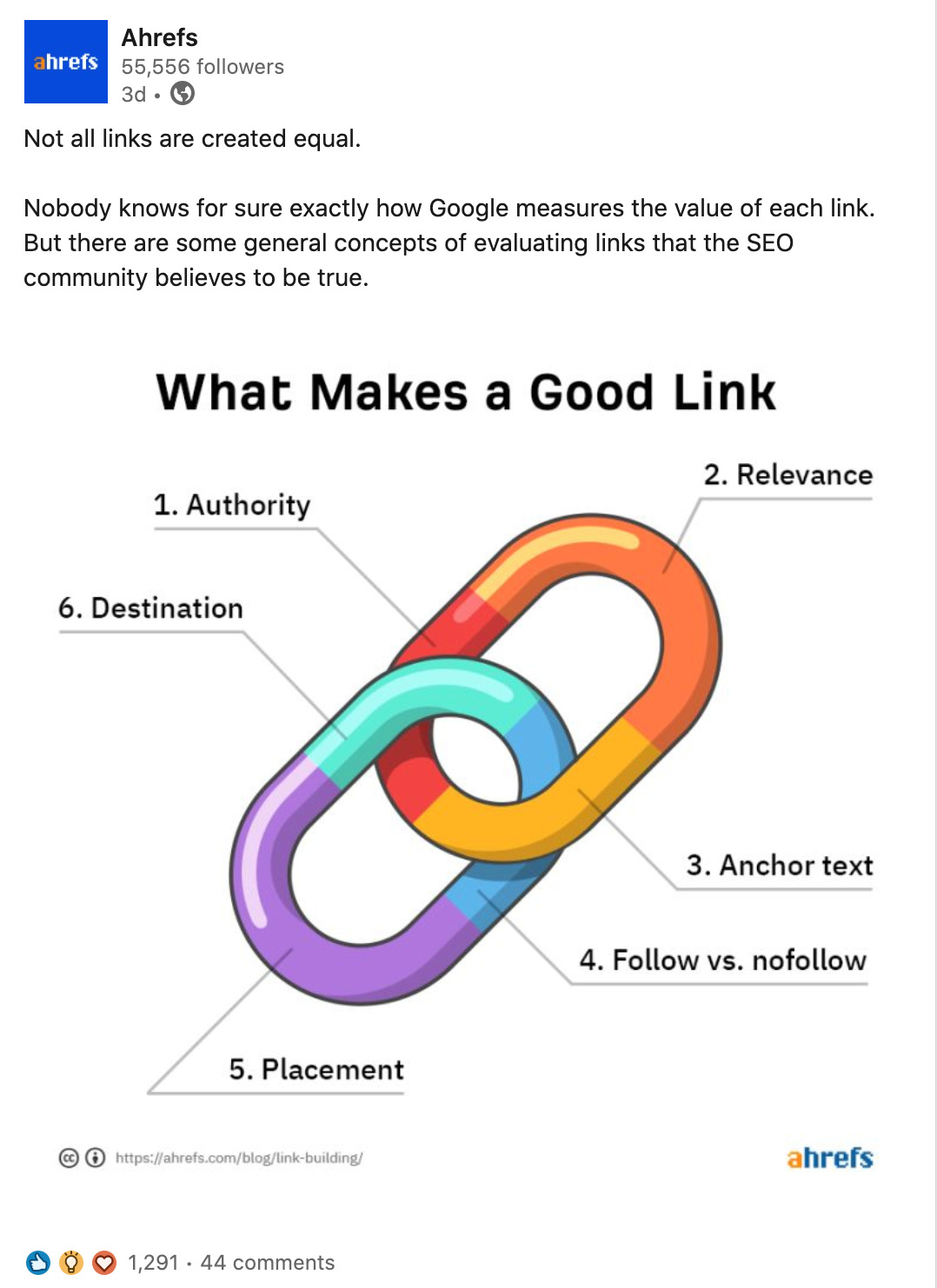
The best part? These “jabs” are not created from scratch. They’re repurposed from our existing content. There’s no wastage; every piece of content we produce goes the extra mile for us.
Final thoughts
The tactics above are mostly free. But don’t forget: if you have the budget, you can always buy paid traffic from Google, Facebook, etc.
That’s usually the fastest way to get started and see results.
Any questions or tactics I’ve missed out? Let me know on Twitter.




